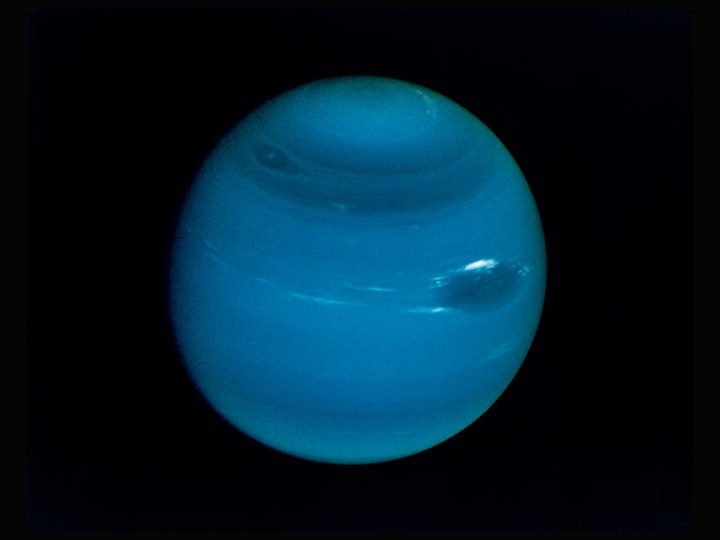Why Neptune's mists have Evaporated: Ice monster's cloudy circumstances are connected to the sun's 11-year cycle, researchers find
Neptune
Neptune, the eighth and last planet from the sun, is known for its paths of wispy white mists comprised of precious stones of frozen methane.
Solid breezes whip these mists across the ice goliath at paces of in excess of 1,200 mph - the quickest recorded anyplace in the planetary group.
In any case, another review shows they have now in essence evaporated, in an improvement that momentarily perplexed researchers.
Specialists have since found that the mists vanish and return as per where the sun is in its 11-year cycle - when its attractive field flips.
They found this in the wake of concentrating on pictures from the Hubble Space Telescope tracing all the way back to 1994.
Another review depicting the discoveries - drove by space experts at the College of California, Berkeley - has been distributed in the diary Icarus.
'I was astounded by how rapidly mists vanished on Neptune,' said Imke de Pater, emeritus teacher of space science at UC Berkeley.
'We basically saw cloud movement drop inside a couple of months.'
Neptune, the fourth biggest planet in our nearby planet group, is an ice monster - an enormous planet comprised of a thick soup of water, methane and smelling salts, which researchers allude to as 'frosts'.
Over this, in its upper air, are the planets unmistakable twirling mists, which mirror every one of the shades of the range in the daylight, making them white.
It was in 1989 that NASA's Explorer 2 space apparatus gave the principal close-up pictures of these brilliant mists - suggestive of cirrus mists on The planet - high in Neptune's climate.
Enclosed by greenish blue and cobalt-shaded groups of mists, the planet seemed to be a blue-tinted kin to Jupiter and Saturn, the blue demonstrating the presence of its methane.
To screen the advancement of Neptune's mists, specialists broke down pictures from Hubble.
They likewise concentrated on information from California's Lick Observatory somewhere in the range of 2018 and 2019 and the Keck Observatory in Hawaii from 1994 to 2022.
They found a wealth of mists regularly seen at the frigid goliath's mid-scopes began to blur in 2019 - and from that point forward they haven't returned to how they were.
From late 2019 onwards, just the south pole showed cloud movement.
'Indeed, even now, after four years, the latest pictures we took this previous June actually show the mists haven't gotten back to their previous levels,' said Erandi Chavez at Harvard's Middle for Astronomy in Cambridge, Massachusetts.
'This is incredibly thrilling and startling, particularly since Neptune's past time of low cloud action was not close to as emotional and delayed.'
Information likewise uncovered an association between Neptune's vanishing mists and the sun based cycle - the period when the sun's attractive field flips at regular intervals, making levels of sun oriented radiation change.
This was astonishing in light of the fact that Neptune is the farthest planet from the sun and doesn't get a lot of daylight - around just 1/900th of the daylight we get on The planet.
The group found that two years after the sun based cycle's pinnacle, a rising number of mists show up on Neptune.
It's idea the sun's UV beams, when sufficient, might be setting off a photochemical response that creates Neptune's mists.
The group additionally found a positive relationship between's the quantity of mists and the ice monster's brilliance from the daylight bouncing off it.
At the point when the planet's reflectivity arrived at its least level at any point saw in 2020, the greater part of the mists disappeared.
The concentrate vigorously recommends Neptune's worldwide overcast weather conditions is driven by sun powered action and not the planet's four seasons, which each last around 40 years.
'Our information give the most grounded proof to date that the discrete cloud inclusion seems corresponded with the sunlight based cycle,' the group say in their paper.
Further perceptions of Neptune are likewise expected to perceive how long the ongoing close shortfall of mists will endure, they add.
This might assist with extending understanding of Neptune as well as of exoplanets - planets beyond our planetary group.
This is on the grounds that exoplanets are remembered to have Neptune-like characteristics, for example, a rough center encompassed by a thick air of hydrogen and helium.
About the Creator
Reader insights
Nice work
Very well written. Keep up the good work!
Top insight
Expert insights and opinions
Arguments were carefully researched and presented






Comments
There are no comments for this story
Be the first to respond and start the conversation.